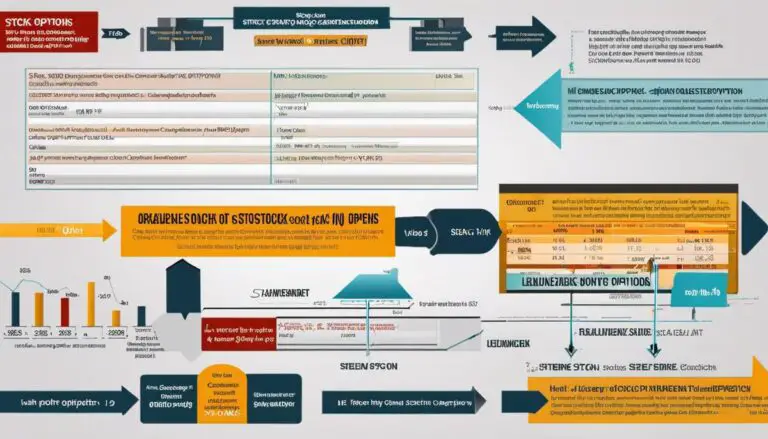Investing is an effective way to grow your wealth over time, offering the potential for both short-term gains and long-term financial security. However, alongside this opportunity, comes the inherent obligation of paying taxes on your investments. Subsequently, understanding how to strategically navigate the tax landscape can significantly impact your overall returns. This leads us to examine the concept of tax-efficient investing strategies. These methods are tactfully engineered to minimize the burden of tax on your investments, boosting your net returns and optimizing your investment growth. A thorough exploration of the various types of tax-efficient investments, from tax-exempt bonds to ETFs, combined with comprehensive implementation techniques can lay the groundwork for an improved financial outlook.
Understanding the Concept of Tax Efficiency
The Makings of a Tax-Efficient Investment: Unveiling the Relevance and Implications
In the challenging landscape of investment strategy, savvy investors are quick to recognize the importance of capitalizing on every possible advantage to build their wealth. One large, often overlooked aspect is tax efficiency. Essential for any investor, tax-efficient investments allow you to maximize your returns while minimizing the tax implications. It’s not a question of just how much you earn, but also how much you get to keep.
Tax efficiency refers to an investment strategy aimed at reducing the tax liability that arises as a consequence of your investments. Instead of entirely focusing on potential returns, tax-efficient investments consider the tax consequences that result from buying, holding, and selling the investment. The goal is straightforward – mitigate the tax burden and let the investor retain a larger portion of their earnings.
Many enthusiasts are intrigued by the idea, but where exactly does one spot these tax-efficient investments?
Markets are walled with investment opportunities that are packaged to counteract the propensity for an unnecessary tax burden. Consider index funds and Exchange Tracked Funds (ETFs) for starters. These investment platforms steer a practical path toward tax efficiency because they sport low portfolio turnover rates. Simply put, these funds aren’t frequently traded, which significantly cuts down on taxable capital gains distributions.
In addition, municipal bond investments present another opportunity. These bonds are typically exempt from federal income taxes, and in some cases, state and local taxes too. For those within the higher tax brackets, a tax-free income stream can be an alluring entrailing route towards tax efficiency.
Hold on though. Is diving into these types of investments always the best strategy? Indeed, strategies must be fit-to-purpose rather than a blanket prescription. An investor’s circumstances, such as income, tax bracket, and investment goals, determine whether moving towards tax-efficient investments is the optimal strategy. It could be more advantageous for some to prioritize investments with potentially higher returns, even if they come with a greater tax responsibility.
A notably essential point to remember is that tax-efficient investing goes beyond simply choosing the right investment type. It revolves around a holistic, smartly planned strategy that considers the type of investment account used, the location of various assets, and the timing of any buys or sales. This tax allocation strategy, known as asset location, not only takes into consideration what you’re investing in, but also where you’re housing these investments. Tax-deferred retirement accounts, for example, can be a savvy investor’s trusty tool towards achieving tax efficiency.
When dealing with this complex world of tax-efficient investments, seeking guidance from skilled financial advisors becomes key. Remember, in the same way a venture iterates to find the right product/market fit, a successful investor iterates to perfect the blend of investment yield, risk, and tax efficiency.
In an economic milieu brimming with opportunities and pitfalls, honing the skills to identify tax-efficient investments is without question a powerful weapon in your arsenal. After all, smart investing isn’t only about how much money you make, but ultimately, how much money you keep. Take the reins and don’t let the tax bird nibble away your hard-earned fortune!

Types of Tax-Efficient Investments
Building on our discussion of tax-efficient investing, it’s worth moving our examination towards other potentially tax-efficient vehicles and strategies, specifically regarding real estate investments, tax-exempt bonds, and life insurance. We shall delve into how they work and why they represent a powerful ally in an investor’s arsenal.
On the list of tax-efficient investments, real estate investments often take the front seat. The attractiveness of real estate investments lies in the plethora of tax advantages they offer. Embracing ‘like-kind exchanges’, also known as 1031 exchanges, can accommodate the deferral of all capital gains taxes. Essentially, if an investor sells one property and buys another similar one, they can defer paying tax on any capital gains until the second property is sold. This strategy can function as a reinvestment tool, propelling the amplification of an investment portfolio if leveraged wisely.
Adding another propeller to a tax-efficient investment strategy, tax-exempt bonds, particularly municipal bonds, can yield advantageous results. These instruments provide a win-win situation as they enable local government entities to finance public projects, while also offering investors a stream of interest income that is generally free from federal income taxes. Certain municipal bonds might also be exempt from state and local taxes, making them ultra-tax-efficient, especially for investors in high tax brackets.
Life insurance doesn’t typically show up on the radars of many investors, given its primary role as a financial safety net. However, it is worth noting that certain life insurance products function well as tax-efficient investments. For instance, the cash value of permanent life insurance grows tax-deferred, and policyholders can even borrow against the cash value, tax-free, in many instances. The real tax advantage, however, comes upon the policyholder’s death – the death benefit is generally tax-free to beneficiaries, making permanent life insurance an effective estate planning tool.
Engaging in tax-efficient investments, no doubt, grants greater control of one’s financial destiny and amplifies the potential for building wealth. But it’s equally crucial to remember that tax efficiency is just one factor in a comprehensive investment strategy. Balancing risk and reward, aligning investments with individual goals, and remaining adaptable in evolving market conditions should lead all investment decisions.
The humble truth to accept is this – the most successful investors belong to the school of never-ending learning. Continual assimilation of financial education, rigorous analysis, careful planning, and flexible strategies define their journey. They’re not simply seeking tax-efficient investments, but strategic opportunities and innovative approaches to wealth creation, capital preservation, and ultimately the cultivation of enduring financial legacies. Commit to joining their ranks, and the realm of financial achievements will cease to be a mystery. Yes, it’s a journey, often a tough one, but remember, a smooth sea never made a skilled sailor.

Steps to Implementing a Tax-Efficient Investment Strategy
Undoubtedly, real estate investments present an exceptional avenue for achieving tax efficiency. The tax advantages related to real estate are prevalent, particularly through deductions for mortgage interest, property taxes, and depreciation. Moreover, specific types of real estate investments, such as rental properties, also offer the additional potential for generating consistent cash flow – a positive income stream post-tax deductions. Thus, strategic investment in real estate can significantly enhance overall portfolio tax efficiency.
In the real estate space, it’s also worth exploring the phenomenon of like-kind exchanges, often referred to as 1031 exchanges. These instruments afford investors the ability to defer paying capital gains taxes on an investment property when it is sold, as long as another ‘like-kind property’ is purchased with the profit gained by the sale of the first property. Having this buffer in place can assist in building an investment portfolio that grows steadily without being hobbled by immediate tax implications.
Nonetheless, tax-efficient investment strategies extend well beyond real estate – bond investments, particularly tax-exempt bonds like municipal bonds, can also be leveraged for advantageous results. Investing in these types of securities can reduce investment income tax burden as the interest income earned on most of these investments is excluded from federal income tax. In some cases, these are also exempt from state and local taxes, further amplifying their appeal as instruments for a tax-efficient investment strategy.
Life insurance products can also play an integral role in crafting a well-rounded, tax-efficient investment strategy. Certain life insurance products, such as cash value life insurance policies, offer accumulation and withdrawal of cash value on a tax-free basis, while the death benefit is generally not subject to income tax for beneficiaries. This tax treatment contributes to the comprehensive tax efficiency of the investment portfolio.
Ultimately, the core strength of a tax-efficient investment strategy lies in its comprehensive nature. By considering a plethora of strategies – from tax-efficient investment options like index funds or ETFs to real estate investments or life insurance products – the goal is to maximize after-tax returns. It’s a strategic arrangement of chess pieces on the financial board – each move calculated, each piece pivotal.
Finally, the engine that keeps this well-oiled machine running and pushing the boundaries of success is a constant thirst for knowledge and financial education. To excel in this game, an investor ought to stay updated on evolving market trends, new products and services, and pertinent changes in tax laws. All in all, this continuous and proactive learning can support the enhancement and consistent performance of one’s investment portfolio in a tax-efficient manner.
In sum, there’s a profound interplay between tax efficiency and investment success. Integrating these aspirational investment strategies into your economic roadmap can lead to remarkable results, laying a sturdy foundation for wealth creation, both in the short and long term.

Potential Risks and Drawbacks of Tax-Efficient Investing
Despite the vast potential benefits of tax-efficient investing, it’s essential to also grasp the potential risks and pitfalls. Remember, as with any investment strategy, tax-efficient investing is not without its challenges. Understanding these potential drawbacks can aid in formulating strategies to counteract them.
One risk lies in the complexity of tax law. Simply put, the intricacies of tax codes are not for the faint-hearted. Tax laws change frequently, and staying abreast of the updates can be a daunting task. This complexity may result in unintentional errors or omissions, leading to potential penalties or missed opportunities.
Another factor to consider is the limiting nature of tax efficiency. By focusing strictly on reducing tax liabilities, we might miss out on potentially lucrative investments that may not necessarily be tax-efficient. The pursuit of tax efficiency should never overshadow the primary investment goal: earning robust returns.
Now, how can these risks be mitigated?
The risk of ignorance about changing tax laws can be managed effectively. Knowledge is power, especially so in the world of investing. Regular professional development, attending financial seminars and consistently staying informed about legislative changes can counteract this risk, preventing accidental non-compliance.
Additionally, tax planning should be a part of an overall comprehensive financial plan. Prioritizing tax efficiency by balancing it with other objectives such as retirement planning, wealth conservation and estate planning help utilize tax efficiencies without risking substantial returns.
Using technology as a tool in managing investments can also aid in mitigating risks. Technological advancements have led to the development of tools that allow investors to stay updated, track their investments, and even simulate the impact of their tax-efficient strategies.
Lastly, seeking professional help should never be underestimated. Engaging financial advisors, tax experts and wealth managers can help navigate the complicated financial waters, ensuring that you make the most out of your tax-efficient strategy while keeping risk at bay.
Tax-efficient investing is a tool in your financial toolbox, and like any tool, it needs to be understood and used correctly. By staying informed, balanced in approach and proactive in engagement, not only can the drawbacks be minimized, but the advantages of tax-efficient investing can be maximized. Remember, tax savings are indeed a form of earnings.

In the world of investing, knowledge truly is power. It is essential to be aware of the potential risks associated with tax-efficient investing, including potentially missed opportunities for high-yield investments, risk of audits, and the intricate complexity of tax laws. Even though these strategies aim for tax minimization, they do not bypass the need for careful decision-making. Thus, your approach should be rooted in a robust understanding of tax laws coupled with personalized financial advice. Ultimately, it is about striking a balance between the benefits of tax-efficient investing and the risks involved – an equilibrium that is unique to each investor’s situation. As you embark, or continue, on your investing journey, keep these tax-efficient investment strategies in mind to maximize your financial growth.



